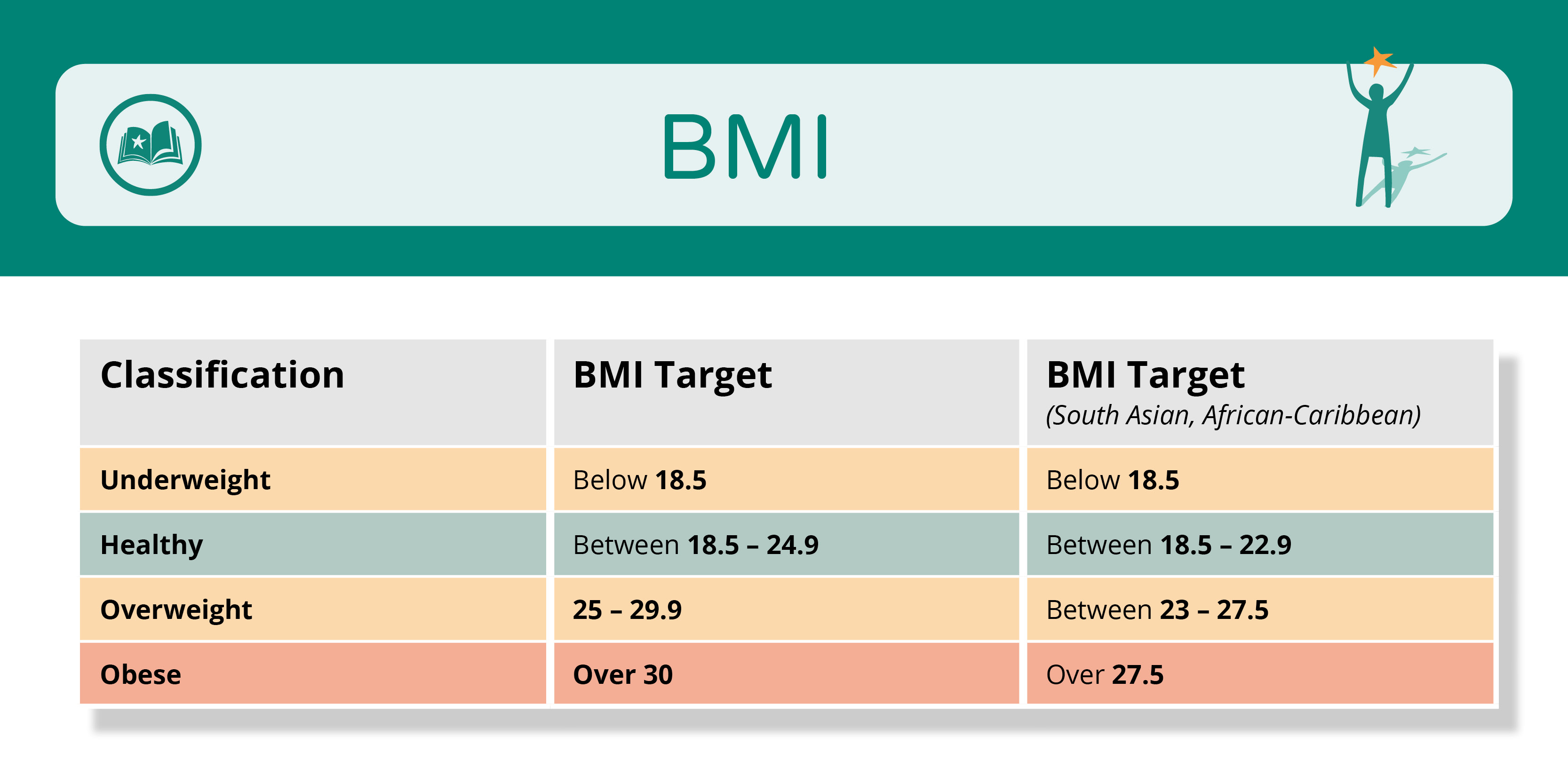Do I Need to Lose Weight?
Contents
- Body Mass Index
- Limitations of the BMI
- How do I get in shape?
- Waist circumference classifications
- Useful resources
Body Mass Index
Body Mass Index (BMI) is a measurement that uses your height and weight to find out if your weight is putting your health at risk.
To work out your BMI:
- Measure your height (in metres)
- Measure your weight (in kilograms)
- Your BMI is your weight (in kg) divided by your height (in metres) squared, i.e. weight (kg) ÷ (height (m) x height (m))
For example:
- Height = 1.65 metres; Weight = 87 kilograms

You can also use a Height/weight chart.
Using this chart, find your height and draw a line across, and then find your weight and draw a line down. The point where the two lines meet shows whether or not you are in a healthy weight range.
Alternatively, try the BMI healthy weight calculator to find out your BMI.
As Table 1 below shows, the BMI can be split into four different categories. However, it's important to note that there are different healthy ranges in both BMI and waist circumference for different ethnicities.
Research shows that if you are South Asian, African-Caribbean, Black African, Chinese or Middle Eastern, or are from two or more different ethnic groups, you are at an increased risk of certain health conditions at lower thresholds when compared to people from white European backgrounds.
Table 1: BMI categories:
 Limitations of the BMI
Limitations of the BMI
The BMI is a useful measure, but it is only a guide and does have some limitations:
- It can only be used for adults over the age of 18.
- It does not apply to pregnant women.
- It is not a good indicator of body fat percentage. A very muscular person, such as a professional athlete, may have a high BMI when their body fat is actually at a healthy level because muscle is more dense than fat.
How do I get in shape?
People who carry weight around their middle (‘apple-shaped’) have greater health risks than those who carry weight around their hips (‘pear-shaped’), even if both are overweight. As well as checking your BMI it is also important to measure your waist size, as this can tell you if you are at increased risk.
To measure your waist:
- Find the bottom of your ribs and top of your hips.
- Wrap a tape measure around your body midway between these points.
- Breathe out naturally before taking the measurement.
You may find the video below useful when measuring your waist:
Waist circumference classifications
Table 2 shows the different categories of risk associated with your ethnicity and waist measurement.

Useful resources
More information and support to help with weight management can be found by clicking on the following links:
- Exercise and Physical Activity: the Impact on Blood Glucose
- Exercise and Physical Activity: Healthy Living
The NHS has developed a free 12-week weight-loss guide that combines advice on healthy eating and physical activity.
The British Heart Foundation has produced a detailed information leaflet to support weight loss.





